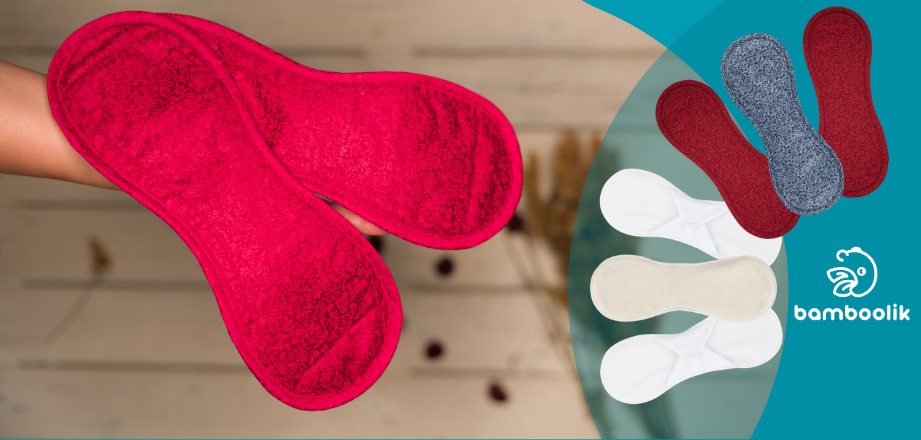We have received a personal review from our satisfied maternity pads user, Anija from Switzerland. Check out what she likes about them and how she recommends to use them:
I purchased a set of these pads in Blue Satin and Organic cotton during pregnancy to prepare for postpartum recovery. I used them before, during and after labour. Some other manufacturers of cloth postpartum pads make them extremely thick and long, however the Bamboolik pads are thin and around the same size of an average heavy-flow menstrual pad. This is a good feature, because I can expect to continue using them when my normal cycle returns. Therefore these pads will not go to waste but will see many more years of use!
However, because the pads are not extra-long, they may not be useful for very heavy bleeding while spending a lot of time lying down in bed. In the first few days after birth, I used the long sterile disposable pads provided by the hospital. Then I switched to cloth pads. The Bamboolik pads are much thinner than the other cloth pad brands I own, but I found their absorption sufficient because I changed them very frequently. With any postpartum pad (disposable or cloth), it is extremely important to change the pad every 2 hours or so, to prevent the build-up of pathogens that may cause postpartum infection while the cervix is still open. Therefore it is best to use pads like Bamboolik which are not built for extremely high absorbency - too much absorbency can encourage tired new mothers to forget to change their pad often enough.
I recommend buying more pads than you think you will need. After birth, it is difficult to keep up with laundry while caring for a baby and dealing with any medical issues that might arise after childbirth. I ended up with a longer period of bleeding than I expected due to complications, and so I needed a large stash of pads for much longer than I expected. I used my previous stash of heavy-flow and overnight menstrual pads from other brands, as well as my new set of Bamboolik. In total around 40 heavy-flow pads. For me, this was a comfortable amount. While at the hospital, I could send the pads home with my husband to be washed daily and returned to me once completely dry, without running out of supplies. I am glad I packed 4 mesh laundry bags and wet bags in my hospital suitcase. Once I was home with my baby, I was able to launder them alongside cloth diapers without worrying about running out.
A few features to note:
- The pads should not be put through the clothes dryer. It is important to air dry them instead. However, my family helping with laundry after the baby arrived did accidentally send the pads through the dryer a few times. I was concerned that the pads might be damaged, however they were fine - they were simply twisted out of shape! I put them through the laundry again and they easily returned to normal shape once wet. It’s good that the pads are sewn strongly, because we all know that laundry is very difficult to manage when babies arrive, especially when cloth diapering, and so mistakes are bound to happen!
- I ordered the blue fabric option. I did find that, when using the pads before labour, the blue fabric lightened in colour. The acidity of discharge during pregnancy will bleach most natural fibre fabrics. This does not affect the performance of the pads, only the appearance.
- It may be best to buy a lighter colour fabric option if you need to keep an eye on the colour and texture of lochia discharge after birth. The dark red and blue fabric options don’t allow you to see clearly. If this is a concern, Bamboolik offers a white terry option as well. If I were to order pads again, I would order both the coloured fabric and the white fabric options, so that I could choose which to use as medically appropriate.
Anija

